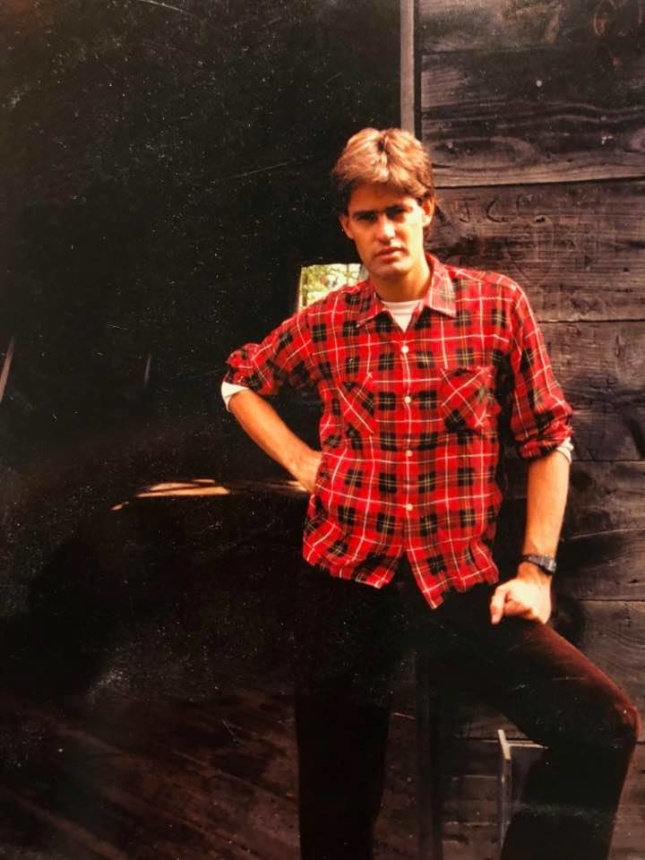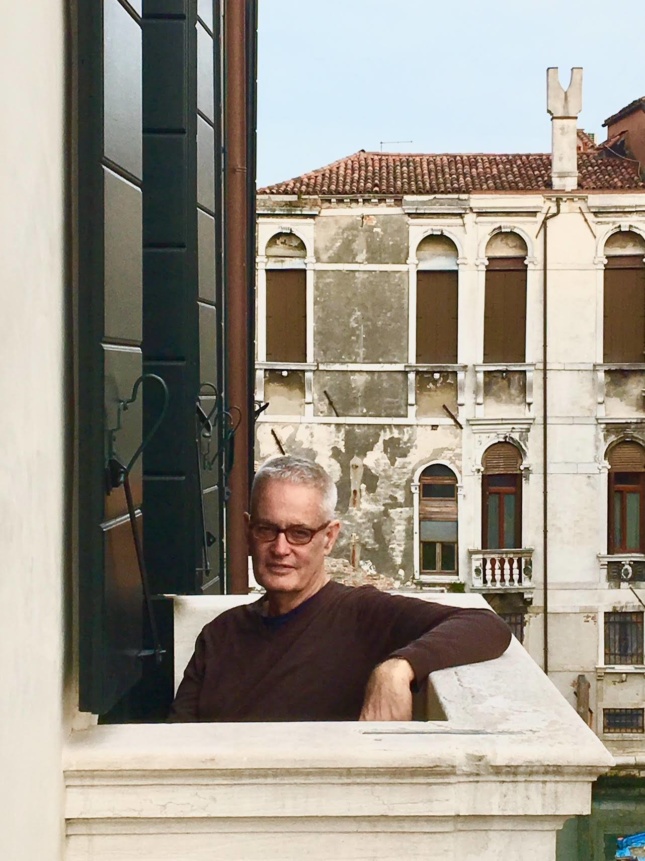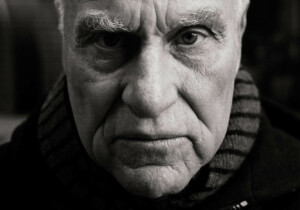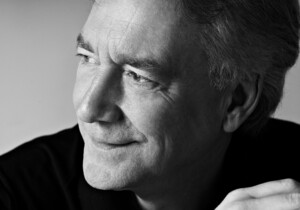William “Bill” Menking, architectural historian and educator who was co-founder and editor-in-chief of The Architect’s Newspaper, passed away today at his Tribeca, Manhattan, loft after a long battle with cancer. He was 72 and is survived by his wife Diana Darling and their daughter Halle.
Menking was an invaluable part of the architecture community of New York as well as nationally and internationally. Best known for founding The Architect’s Newspaper with Diana Darling in 2003, he was also a prolific curator and writer. Menking was on the Board of Directors at the Storefront for Art and Architecture and The Architecture Lobby, as well as a tenured professor and trustee at Pratt Institute. He was the curator of the 2008 U.S. Pavilion at the Venice Biennale of Architecture and organized many exhibitions, including The Vienna Model: Housing for the Twenty-First Century City and Superstudio: Life Without Objects, the latter of which became an important book on the Italian collective. He was also the author of Four Conversations on the Architecture of Discourse (2012) and Architecture on Display: On The History of the Venice Biennale of Architecture (2010); both were co-edited with Aaron Levy and published by Architectural Association in London.
For Bill, the discourse and production of architecture were as much about people as they were ideas. In fact, the two were interchangeable in many ways. Likewise, art was his life and he made life into an art. It is sad that someone who enjoyed life as much as Bill would ever have theirs cut short, but we can take solace in the fact that Bill did more living in his 72 years than most of us would do in three times that long.
His friends were his colleagues, who he loved to connect and gather, whether for a gallery talk or for a round of beers. “I am sorry for those who didn’t experience his amazing [1998] Archigram show at the Thread Waxing Space [in New York], just one of many mega projects in his determination to share his boundless enthusiasms with us,” said Barry Bergdoll, Meyer Schapiro Professor of Art History at Columbia University. “The same generosity spread into the weekends when he staged Texas-style BBQs in his garage in Greenport, on his beloved North Fork.”
This zest for life and love for travel took him around the world, most of all to Italy; he literally attended every Venice Architecture Biennale since it started in 1980. He was something of a one-man tourism bureau for the places he visited, always excited to give the best recommendations for architecture, museums, sightseeing, or restaurants. He would rarely lead you astray; usually one wound up far off the beaten path. “Bill was such a luminous and restless intellect, drunk with the delight of connecting the loose ends of architecture, urbanism, and art,” said architect Marion Weiss. “His enthusiasm for radical architecture, urban exceptions, and great food was infectious.”

Bill had a knack for being in the center of the action. Perhaps because it was in his DNA—he descended from some of the earliest British settlers in America, as well as the Okies who continued this trailblazing tradition. Bill was born at the Ramey Air Force Base in Aguadilla, Puerto Rico in 1947 and raised in Stockton, a small town in California’s Central Valley, where he worked as an air-traffic controller for crop dusters and once played football against O.J. Simpson. He attended UC Berkeley to study architecture and urban studies from 1967–1972, and I can only imagine the things he saw there (something about Governor Reagan bombing him and his friends or something). Clearly, this immersion in American counterculture helped shape his excellent taste and avant-garde predilections, from radical architecture to social activism, to local clothing shops and DIY oyster shacks.
During school, he headed to Florence, Italy, where he met key players of the radical architecture movement such as Archizoom Associati, Superstudio, and Grupo UFO. His interactions with this community of radical thinkers, designers, and architects would form the foundation of some of his most important research and curatorial practice, including multiple shows on Superstudio as well as a seminal book (written with Peter Lang) published in 2003. It laid the groundwork for his future work on Archigram, the British cousins of the radical Italian architecture movement.

In 1974 and 1975 he worked as an organizer for the United Farm Workers, helping establish labor unions in rural towns in central and southern California, before landing in downtown New York City at a time of heightened cultural production. Hanging among this vibrant art scene, he met Dan Graham, with whom Bill drove around New Jersey documenting suburbia. In typical Bill fashion, he got a job as a server at Studio 54, where he witnessed iconic moments like when Bianca Jagger rode a white horse through the club. He moved into his famous Tribeca loft space on Lispenard Street, which he built out into a classic downtown dream loft that he was always excited to offer up as a venue for fundraisers, or for meetings and holiday dinners with AN staff. He had one of the better-stocked liquor collections, almost entirely gifts from foreign visitors who would stay with him when visiting New York.
With an acumen for learning and navigating the urban environment, Bill began working in the early ’80s to work as a location scout for film and TV in New York. This led him to sunny and decrepit Miami, where he took up an art director post on Miami Vice; his contributions to the show helped rehabilitate many of Miami’s now-celebrated modern and Art Deco buildings. In the ’90s, Menking moved to London to attend the Bartlett School of Architecture, where he was subsequently hired as a tutor. During his time there, he became close with Peter Cook and other members of Archigram, and wrote for architectural publications including The Architects’ Journal and Building Design, both then thriving in England. The experience inspired Bill to import this model to the United States, and The Architect’s Newspaper was born in 2003 in his loft. “We had no idea what we were doing, and it made it better!” he often told me.
“In an age where information is fundamental to our lives, The Architect’s Newspaper filled a gaping void, with straightforward reporting on what’s happening in the profession day to day that we weren’t getting from the two remaining monthly professional journals, and certainly not from newspapers,” recalled Robert A.M. Stern, architect and regular reader of AN. “It also brought to our shores an American version of the lively discourse we’d been reading from the U.K.”

“AN is just what it says it is, a newspaper. Strange that no one used this concept before Menking,” said Phyllis Lambert, founder of the Canadian Centre for Architecture and avid AN reader. “Like the New York Times and the Guardian, it is my source for deeply informed, judicious information about what is happening in the field.”
We will continue to celebrate the life of Bill Menking, who will be remembered as someone who was always in the right place at the right time, agitating and connecting, breathing life into whatever was around him. Bill’s memory will live on not only through the continued influence of The Architect’s Newspaper, Pratt, and Storefront, but also through all the lives he touched with his mentorship and guidance.
Everyone who came through the paper took some part of Bill’s thinking with them. For me, his influence is palpable: How to avoid the status quo or the cliché. How to work in and around institutions. How to do more with less, and not be too precious. How to keep the social mission radical. Many of my fellow travelers came through Bill, including my Rockaways fishing buddy Walter Meyer and my Sunday pasta buddy James Wines, both, like Menking, equally lovers of life and intellectual discussion.
I can’t count the number of people whose work I studied in architecture school that I ended up meeting through Bill in social situations, nor, I suspect, can others. “Bill was someone who gave you everything without asking anything in return. He was a connector of people, ideas and souls,” said Eva Franch I Gilabert, former director of Storefront for Art and Architecture and now director of the Architectural Association. “If I just made a map of all the people he connected me to, I would be able to make a portrait of a generation of idealist, honest, generous, radical and eternally young.”
One time, Bill and I were hanging out with his buddy Alastair Gordon outside the tent at Design Miami, when Hans-Ulrich Obrist came up to us. Taking a moment to pause, Hans said it best in his signature accent, with a big, shining smile: “Bill Menking is a legend.”
In the coming days The Architect’s Newspaper will be launching a memorial landing page where we will be posting tributes to William Menking.











